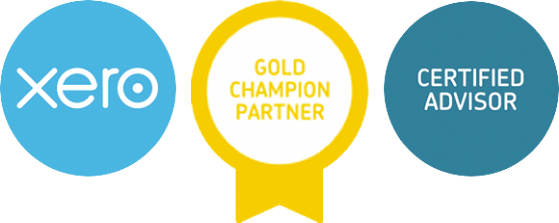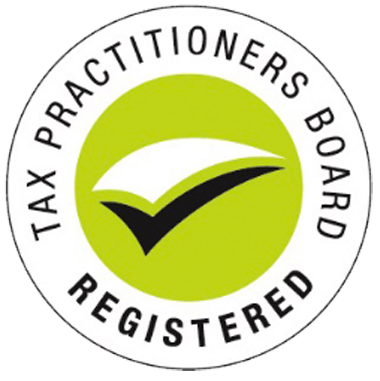There have been a number of changes around superannuation announced in the recent federal budget with the aim of increasing the members’ retirement balance and facilitating a more equitable superannuation system.
Changes Effective from 1 July 2021
1) Mandatory Increase to Superannuation Guarantee Rate
The superannuation guarantee is the rate that employers must contribute to their workers’ retirement savings. This rate is legislated to increase by half per cent a year before reaching a final value of 12% by 2025.The first superannuation rate of increase from 9.5% to 10% of gross wages will come into effect from 1 of July 2021.
Read more about the SG changes in our latest Your Knowledge newsletter here.
2) Increase in Contribution Cap
A range of changes allows most people to put more into super.
- Concessional (pre-tax) contributions are increasing from $25,000 to $27,500 per year. Concessional contributions are taxed at 15% upon entry.
- Non- concessional (post-tax) contributions (NCCs) are increasing from $100,000 to $110,000 per year. Non-concessional contributions are not taxed upon entry, although you will have already paid tax on the sum.
- Activating the ‘bring-forward arrangement’ allows contributions of up to three years’ worth of NCCs in a single year. That is increasing alongside the NCC from $300,00 to $330,000. The three-year bring-forward maximum contribution is based on the non-concessional contributions cap at the time the bring-forward is triggered. Triggering it before July 1 will exclude you from accessing the increased cap.
3) Increase in Total Super Balance (TSB) Cap
The ability to add to super with NCCs is limited by the TSB. After the super balance exceeds the TSB, no more NCCs can be made, and the TSB cap is increasing from $1.6 million to
$1.7 million on 1 July. Note there are eligibility limits depending on a person’s age on 30 June of the previous financial year.
4) Increase in Transfer Balance Cap (TBC)
The amount a person can transfer from accumulation phase to a retirement phase pension is called the TBC and is also going up to $1.7 million for people starting a new pension. Investment returns in the pension phase are generally tax free while they are taxed at 15% in the accumulation phase.
Anyone with a transfer balance account of $1.6 million any time since 1 July 2017 is not eligible for the $100,000 increase. Those with transfer balance accounts below that previous TBC cap will receive a portion of the increase. This calculation becomes complicated and most people affected should obtain financial advice. Those who have yet to start a retirement phase income stream before 1 July 2021 will receive the full increase. People with more than one fund, such as an SMSF, a retail fund or an industry fund, need to know that all balances are included in the transfer balance cap.
The bottom line is more contributions can be made. Chat with your financial adviser about how much of the increase you will be eligible for.
5) Changes in Governance and Monitoring
Changes are also expected in the way super funds and SMSFs operate because of the Government’s ‘Your Future, Your Super’ (YFYS) legislative package. Some of these changes are still subject to industry consultation and may not clear legislation before 1 July 2021.
Many Australians have multiple superannuation accounts from previous jobs. Duplicated fees and possibly insurance policies lead to lower returns and less savings in retirement. From 1 July, superannuation account will follow members when they change jobs, and the new employer will pay contributions into the existing account.
The Government is also rolling out a new tool, ‘YourSuper’, to compare public superannuation products based on performance and fees. There will be annual performance tests and underperforming funds will be required to notify members and refer them to the ‘YourSuper’ comparison tool. Those funds that fail the test twice in consecutive years will not be allowed to accept new members.
Superannuation funds will be required to be more transparent in how they spend fund money, for example, on advertising campaigns or sponsorships. Funds that are unable to justify expenditures are in the best financial interest of the members will face penalties.
As the YFYS package has yet to pass, these proposals are subject to change.
Changes Effective from 1 July 2022
All changes outlined below, other than the proposed changes to legacy retirement products, are expected to commence from 1 July 2022, once they have received Royal Assent.
1) Removal of the $450 Minimum Wages Threshold for Superannuation Guarantee
For years, superannuation industry bodies and social welfare groups have been calling for the $450 rule to be scrapped to assist people on lower incomes. That has now been changed, and for the first time regardless of the monthly income earned, employees will now receive the superannuation guarantee. Removing the $450 a month threshold for superannuation guarantee payments would benefit the lower income workers, particularly women and workers who have few casual or part time jobs. The government expects that this will be legislated before July 2022.
2) No More ‘Work Test’ for Voluntary Contributions
Another budget announcement is that the work test requirement will be removed for most contributions. Under current regulations, individuals aged 67 to 74 could only make voluntary contributions (both concessional and non-concessional) to their superannuation fund, or receive contributions from their spouse, if they met the “work test”. That is, they must have worked at least 40 hours over 30 consecutive days in the relevant financial year to be allowed to make the contributions.
From July 2022 the individuals between ages 67 to 74 will be able to make non-concessional superannuation contributions (including under the bring-forward rule), or salary-sacrificed contributions, without meeting the work test. The work test will still be applicable for the individuals aged between 67 and 74 wanting to make personal concessional contributions. This is expected to be legislated to apply from 1 July 2022.
Opportunity to even up spouse balances and maximise superannuation in pension phase – Couples where one spouse has exhausted their transfer balance cap and has excess amounts in accumulation are able to withdraw and recontribute to the other spouse who has transfer balance cap space available to commence a retirement phase income stream. This can increase the tax efficiency of the couple’s retirement assets as more of their savings are in the tax-free pension phase environment.
Top up retirement savings up to age 74 – Subject to contribution caps,
the new rules can help individuals contribute additional funds to super up to
age 74, perhaps where they may have received an inheritance or sold an
investment property.
Make your tax components more tax free by using recontribution strategies – SMSF members
can cash out their existing super and re-contribute (subject to their contribution caps) them back in to the fund to help reduce tax payable from any super death benefits left to non-tax dependants. They can now do this until they turn age 75.
Opportunities to make spouse contributions for longer – The new rules can provide you
with the opportunity to continue making spouse contributions which can not only
help with equalising super between spouses, but may also enable the
contributing spouse to benefit from the spouse contribution tax
3) Super Downsizer Contribution Age Change
The downsizer contribution allows people to make a one-off contribution to their superannuation of up to $300,000 per person from the proceeds of selling their home. Currently, downsizer contributions to a superannuation fund can only be made by individuals aged 65 or older. Downsizer contributions apply to the sale of a principal residence owned for the past ten or more years. The Government has proposed lowering this age to 60. It is important to note that the downsizer contributions do not count towards an individual’s non-concessional contributions cap. If these changes are legislated as announced from 1 July 2022, it will allow an extra $300,000 (or $600,000 for a couple) to be contributed to the superannuation fund if the contribution is made after the age of 60 regardless of how much they already have in super.
4) First Home Buyers Can Save More Through Super
Under the First Home Superannuation Scheme (FHSSS) first home buyers were able to release up to $30,000 of their voluntary contributions to use towards the purchase of an owner-occupied property. Under the changes in the 2021-22 budget first home buyers will be able to use up to $50,000 of their voluntary contributions paid to their superannuation fund.
5) Relaxing SMSF Residency Requirements
Two changes have been announced in the budget to make life easier for those individuals who live overseas and are members of a self-managed super fund or small APRA regulated funds. Firstly, the removal of the “active member” test, and secondly, extending the central control and management test safe harbour from two to five years for SMSFs
Under current regulations, a fund can fail the definition of the Australian superannuation fund when it receives the contributions from members who are not Australian tax residents. Removal of this test will benefit individuals who live overseas. The second change on residency is that the Government plans to relax the residency requirements for SMSFs and small APRA-regulated funds by allowing members of SMSFs and small APRA-regulated funds to maintain control of their funds for five years, up from two years previously.
6) Legacy Retirement Product Conversions
Individuals will be able to exit a specified range of legacy retirement products, together with any
associated reserves over a two-year period. The specified range of legacy retirement products includes market-linked, life expectancy and lifetime products, but not flexi-pension products or a lifetime product in a large APRA-regulated or public sector defined benefit scheme.
Currently, these products can only be converted into another like product and limits apply to
the allocation of any associated reserves without counting towards an individual’s contribution cap.
There is considerable additional detail in this feature so consult an adviser if you are affected,
especially to ensure you do not lose other entitlements such as the age pension.
This measure will take effect from the first financial year after the date of Royal Assent of the
enabling legislation.
7) Improving the Pension Loan Scheme
The Pension Loan Scheme (PLS) currently allows a fortnightly loan of up to 150% of the maximum rate of age pension to boost a person’s retirement income by unlocking capital
in their real estate assets. It can be available for self-funded retirees who are age pension age but do not receive a social security pension. Interest is compounded fortnightly at 4.50% p.a., and any debt under the scheme is paid back when the property is sold or the person dies.
From 1 July 2022, the Government will introduce the following:
– “No negative equity” guarantee
Borrowers under the PLS, or their estate, will not owe more than the market value of their property in the rare circumstances where their accrued PLS debt exceeds their property value. This brings the PLS in line with private sector reverse mortgages.
– Immediate access to lump sums under the PLS
Eligible people will be able to access up to two lump sum advances in any 12-month period, up to a total value of 50% of the maximum annual rate of age pension (currently $12,385 for singles and $18,670 for couples).
More information regarding superannuation changes is contained in our latest YourKnowledge newsletter, which you can download here.
For more information please contact your our superannuation specialists on 02 4936 6185.




